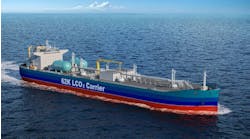Editor's note: This Comment column first appeared in the May-June 2024 issue of Offshore magazine. Click here to view the full issue.
By David Paganie, Chief Editor
The impetus in recent years for the oil and gas industry to invest in carbon, capture, and storage (CCS) projects has shifted from a mechanism for enhanced recovery (EOR) to a means of reducing greenhouse gas emissions in support of climate change initiatives.
This shift has led to an increase in investor interest, but developers struggled to move dedicated storage plans to sanction due to challenging project economics. Government intervention is improving the commercial case of offshore CCS development, which has enhanced the project pipeline.
There are two primary methods of CCS – capturing CO2 from point source emissions, such as power generation or industrial facilities; and direct-air capture. Most of the operational CCS projects are onshore for EOR. The operational offshore CCS projects are connected to natural gas processing for dedicated storage, except for one offshore Brazil that injects CO2 for enhanced recovery. Norway launched the first offshore CCS project for storage in 1996.
While there are only a few offshore operational CCS projects for dedicated storage, global offshore continental shelves are emerging as ideal targets for new developments. This is due to the relative thickness of the sedimentary basins and their high porosity, permeability, and good seals for containment. Another benefit is that many of the suitable formations are away from population centers and near large industrial activity that tend to be along coastlines. This improves the safety and environmental elements of the project and reduces transportation costs. Also, there are more single-pore owners offshore versus onshore which can reduce the complexity of a commercial arrangement. And there are thousands of potentially suitable formations offshore that could help the market reach scale.
The other noticeable shift in CCS strategy is the target source of emissions. Most of the offshore projects that are under development aim to capture carbon emissions from onshore industrial centers. The industry will look to acquire any lessons learned from the first large-scale project of this type – Northern Lights offshore Norway – when it starts up later this year.
In the US, the Gulf of Mexico has been of particular interest to CCS investors due to the favorable formations for injection just off the coast, which are near sources of high industrial activity. A recent study by the National Energy Technology Laboratory identified approximately 490 million metric tons/year (MTPA) of CO2 emissions from about 1,000 sources along the Gulf Coast Corridor. This equates to about 42% of the emissions in the Lower 48 states. A big gap in the US offshore storage market is a regulatory framework, and one could be available by the end of this year, followed by a lease sale in the GoM within five years.
Momentum in global CCS projects has been fueled by activity in North America, where more generous tax credits and new grant funding programs have led to the announcements of over 100 projects across the CCS value chain since January 2022. Globally, policy support has pushed the CCS project pipeline from about 160 MTPA of capture capacity at the end of 2021 to about 360 MTPA at the end of 2023.
Most of the global offshore CCS projects that are in the planning and development stages are intended strictly for geological storage. Some will use depleted oil and gas fields, and others will target deep saline formations. Many of the projects also intend to reuse existing infrastructure, but there will be some new offshore facility requirements. These include CO2-compliant pipelines and subsea injection, monitoring, and leak detection systems. See Jeremy Beckman’s article and this issue’s “Business Strategies” special report for more perspectives and project updates on the offshore CCS market.
One executive with a major operator at OTC in Houston told an audience that he thinks offshore CCS could be a trillion-dollar opportunity. Time will tell, and there are still many challenges, but government intervention seems to be improving investor sentiment.




